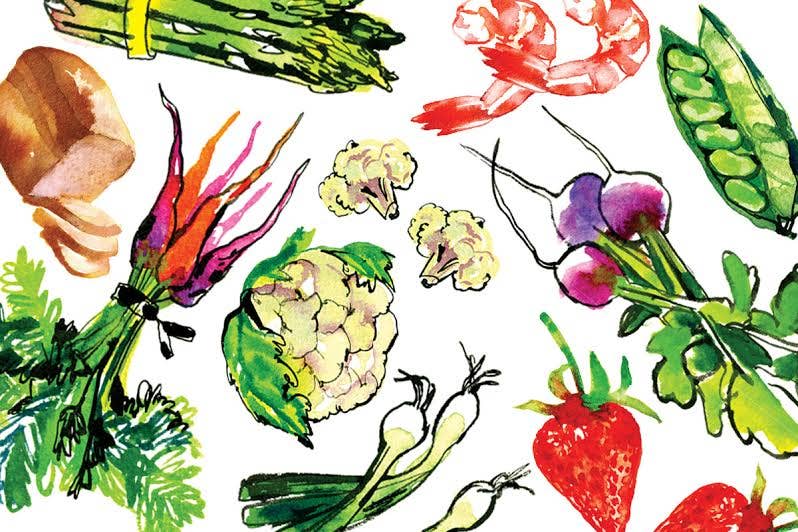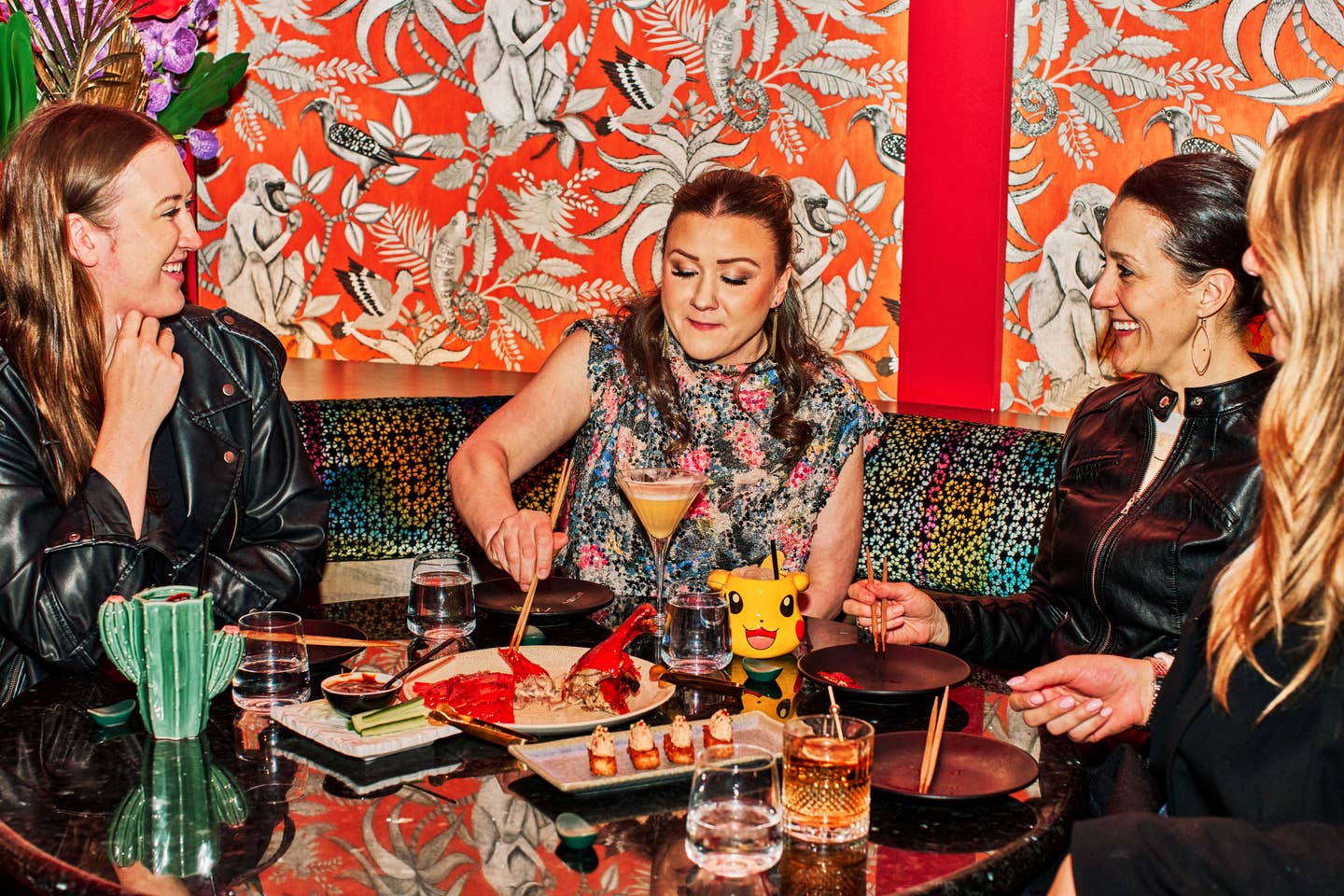
Mesclun is the other salade niçoise—a mix of greens apparently first formulated (and named) by monks from the Franciscan monastery in Cimiez, in the hills above Nice. These mendicant holy men, it is said, gathered baby greens from hillside fields each spring and presented them to their benefactors as a symbolic expression of the season.
Some say that mesclun traditionally included a dozen kinds of leaves, one for each of the Apostles. Others say that the number of elements was unimportant, but that the greens were never more than 15 days old, and were always a mix of bitter and sweet. (Mesclun—pronounced "mes-CLOON" in the local dialect—takes its name from the Niçois verb mescla, meaning "to mix".) Today, real mesclun typically includes arugula, chervil, an assortment of young lettuces, and sometimes radicchio. Frisee (curly endive), chicory, dandelion greens, and purslane are other possibilities.
But what of the mesclun (apt to be pronounced "mes-KLAN") on every menu in America today? That, mon ami, is something else again. The term has come to mean just about any melange of young greens, including those of Asian derivation; it's practically a synonym for mixed green salad—except, of course, that it's so much more than green. One Manhattan gourmet food-store newsletter defined it not long ago as including "tat soi [sic], frisee, red mustard, mizuna..., lolla rossa, baby red or green romaine & baby red or green bib [sic] lettuce [and] [o]ccasionally…, endive, herbs, tricolored amarinth [sic] or edible flowers..."
What makes this herbaceous mishmash "mesclun"? Why has this very specific, localized term been appropriated by every eclectic estaminet in America? It's something to do with our mania for things Mediterranean, most probably. Something to do with buzzwords. Or maybe it's just a longing for eternal spring.
Keep Reading
Continue to Next Story










